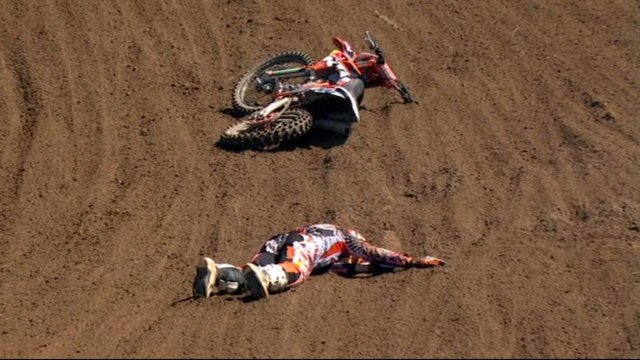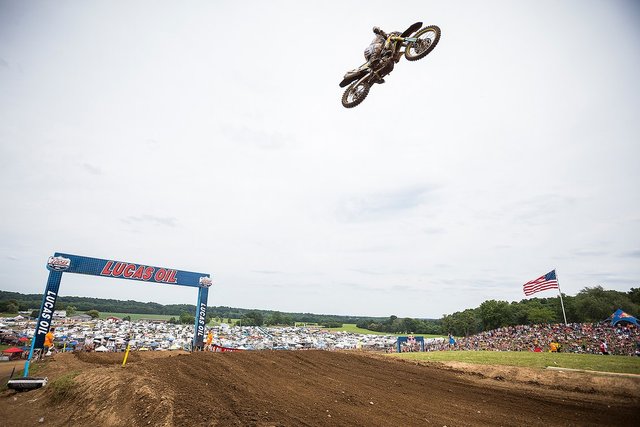MOTOCROSS

MOTOCROSS IS UNQUESTIONABLY dangerous. Like every form of motorsport, it involves a vehicle—in this case a small- to medium-displacement dirtbike, almost always under 500 cc. And it requires that you go out and go faster than someone else.
The catch comes in the bike. Unlike, say, a race car, the design of a racing motorcycle has little impact on its operator's safety in a crash. If you fall off a bike, you're going to hit something—usually, but not always, the ground. Motocross and its stadium-born cousin, Supercross, increase the risk, with their big speeds, close traffic, and propensity for bikes to fly through the air in the course of normal competition.

Off-road bike racing is undoubtedly awesome, but you can't argue that the sport contains a certain amount of seeming impossibility. How do people do this and not break bones every five minutes? Has modern technology changed injuries? And what does a career racing dirt bikes teach you?
To get a better idea of how motocross riders stay alive, we talked to three people from different corners of the moto world: provocateur Ricky Johnson, who retired due to injury at the ripe old age of 26; Chris Sackett, the vice president of Bell Helmets, the company that invented the purpose-built motorcycle helmet; and Jeremy Appleton, a motorsport specialist for safety-gear manufacturer Alp
Hi! I am a robot. I just upvoted you! I found similar content that readers might be interested in:
https://www.wired.com/2015/06/motocross-riders-dont-die-time/